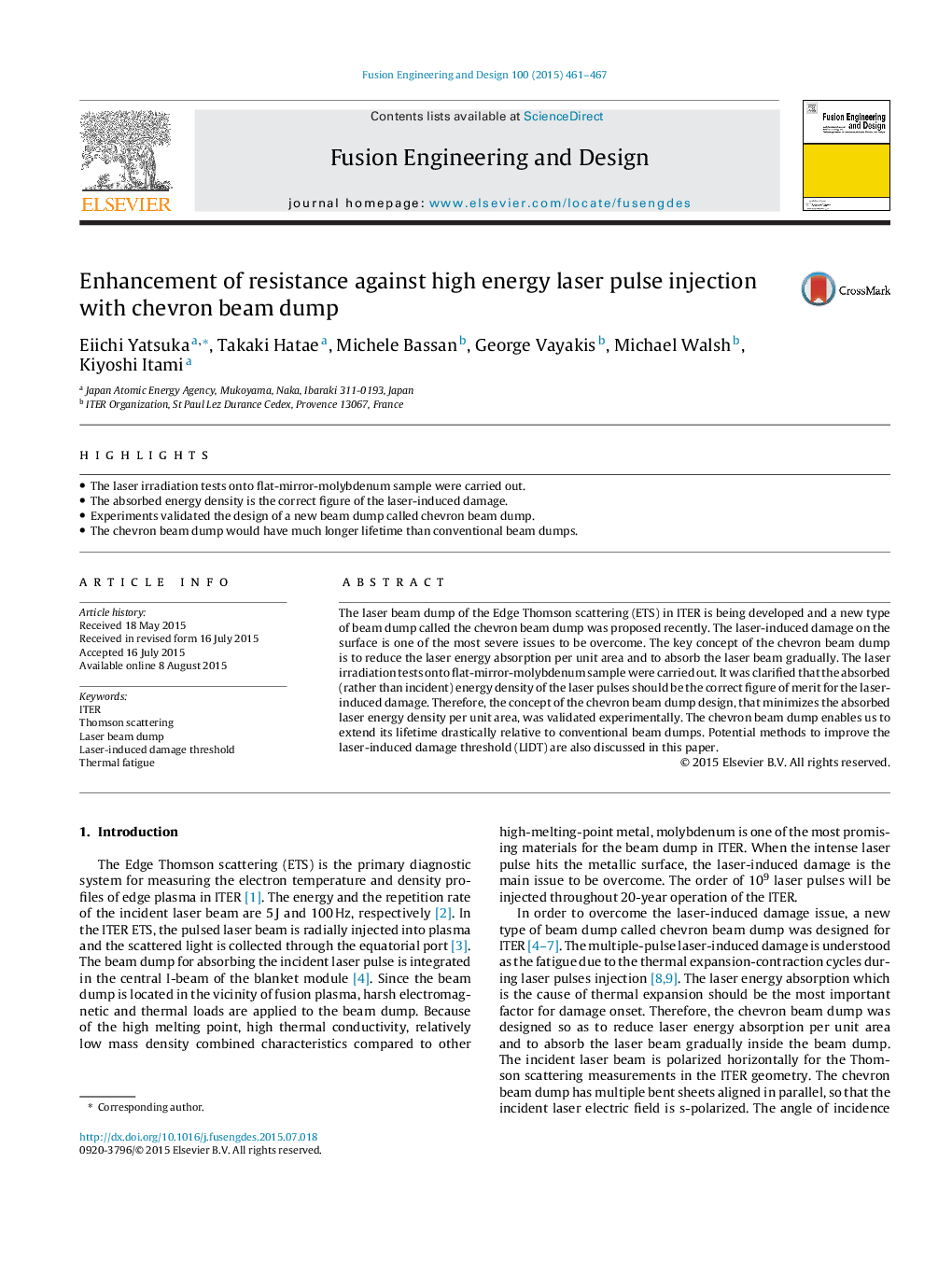| Article ID | Journal | Published Year | Pages | File Type |
|---|---|---|---|---|
| 6745938 | Fusion Engineering and Design | 2015 | 7 Pages |
Abstract
The laser beam dump of the Edge Thomson scattering (ETS) in ITER is being developed and a new type of beam dump called the chevron beam dump was proposed recently. The laser-induced damage on the surface is one of the most severe issues to be overcome. The key concept of the chevron beam dump is to reduce the laser energy absorption per unit area and to absorb the laser beam gradually. The laser irradiation tests onto flat-mirror-molybdenum sample were carried out. It was clarified that the absorbed (rather than incident) energy density of the laser pulses should be the correct figure of merit for the laser-induced damage. Therefore, the concept of the chevron beam dump design, that minimizes the absorbed laser energy density per unit area, was validated experimentally. The chevron beam dump enables us to extend its lifetime drastically relative to conventional beam dumps. Potential methods to improve the laser-induced damage threshold (LIDT) are also discussed in this paper.
Related Topics
Physical Sciences and Engineering
Energy
Energy Engineering and Power Technology
Authors
Eiichi Yatsuka, Takaki Hatae, Michele Bassan, George Vayakis, Michael Walsh, Kiyoshi Itami,
